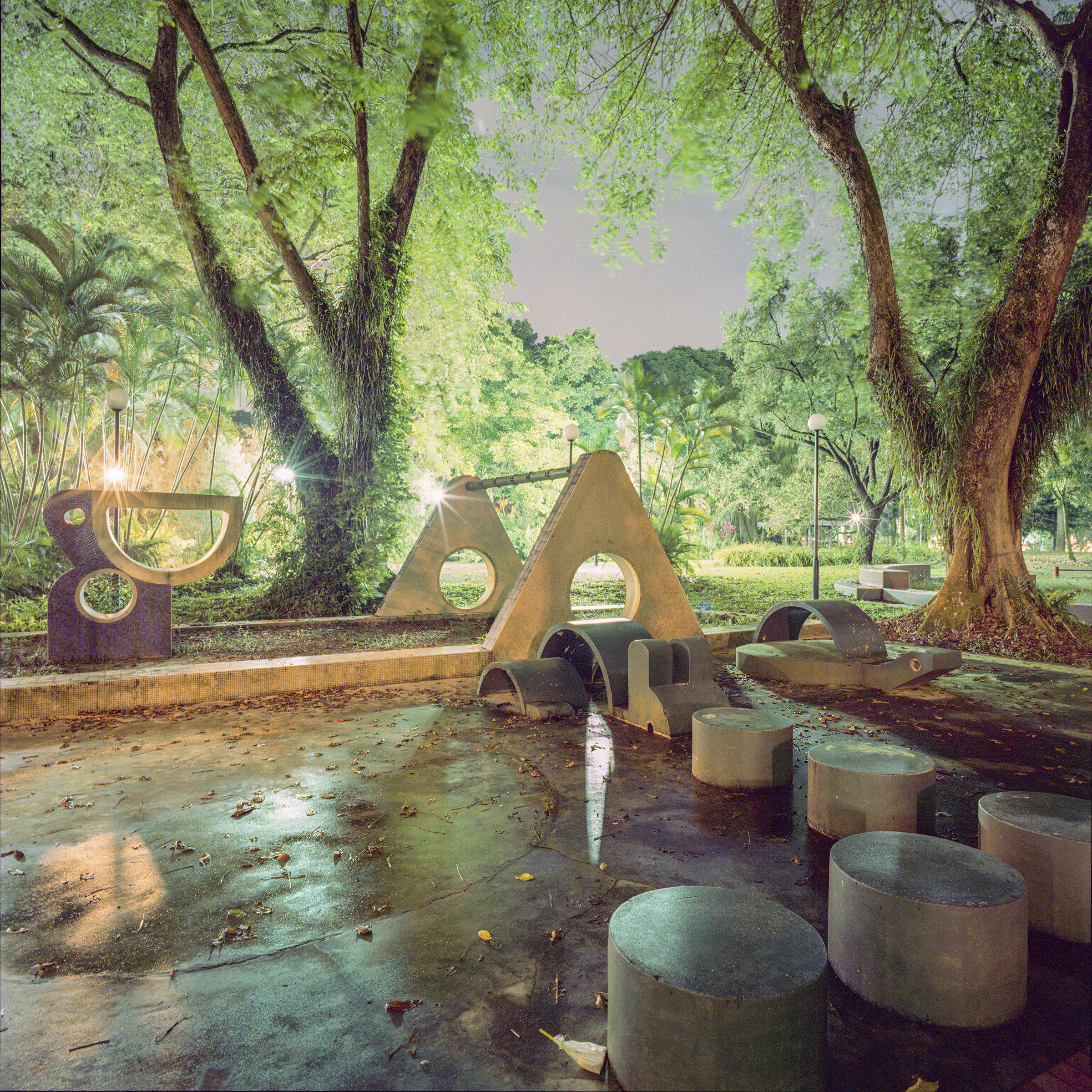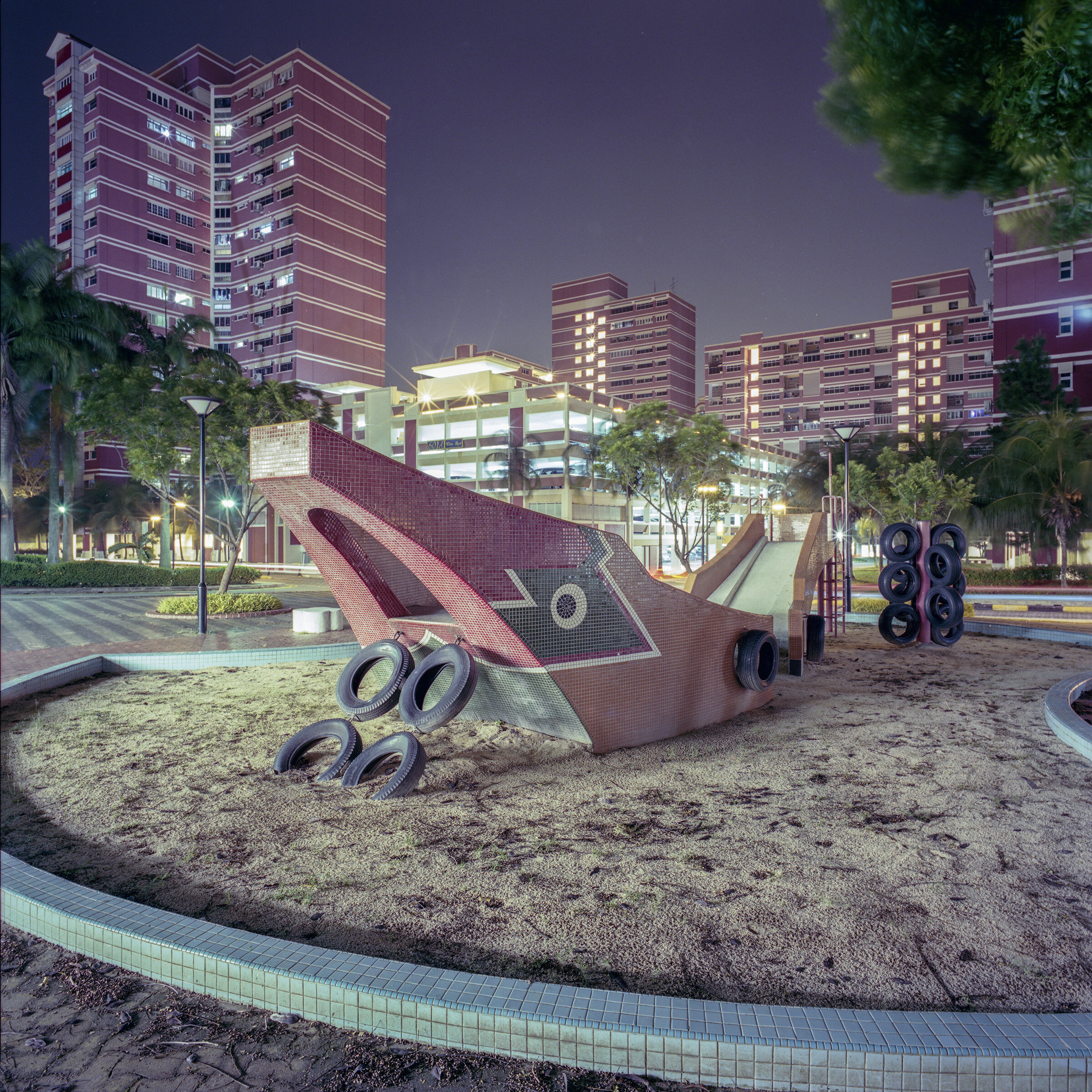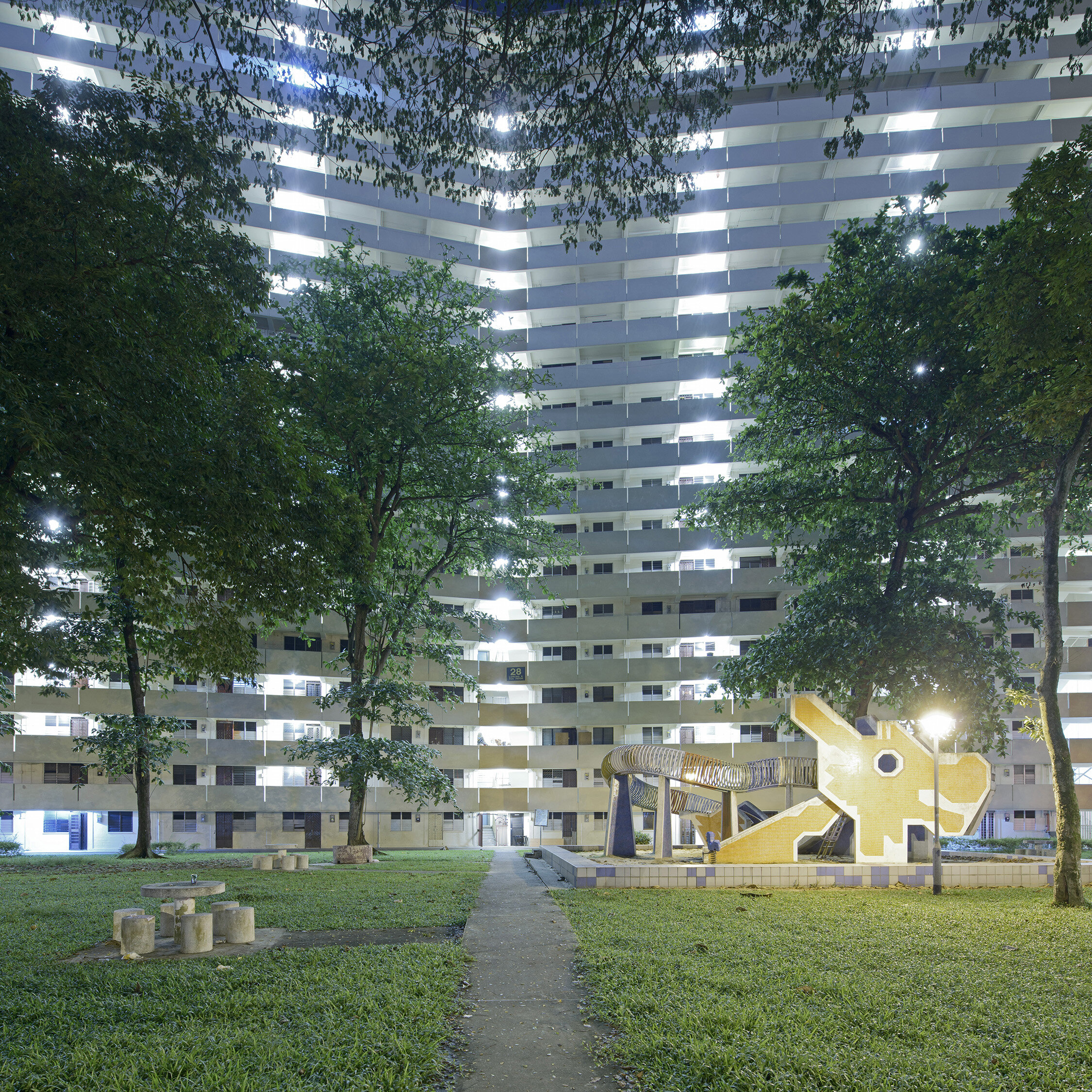HDB Playgrounds
Playgrounds were planned and built by the Housing and Development Board (HDB) as a part of housing estates since HDB’s inception in 1960. The early playground designs were similar to those you would find in the West. In the 1970s, HDB began experimenting with playground designs and structures that were unique to Singapore and interior designer Khor Ean Ghee was one key individual involved in the process. Khor’s playground designs went through several phases, mainly to make his earlier sculptural designs more buildable and low-maintenance. These were important considerations as HDB was planning, building and maintaining many housing estates.
Khor’s best-known designs were the animal-shaped playgrounds (dragon, dove, rabbit, and pelican, among others), which were sculptural but geometrical, thus easy to construct. They were built with concrete and steel, and finished in colourful mosaics and terrazzo so that they were attractive but still durable and easy to maintain. Although most of these playgrounds have been demolished and replaced by generic fibre-glass playgrounds, they have re-entered the national consciousness when they became immortalised in souvenirs designed by a generation of Singaporeans who were nostalgic for their childhood and in search of a Singapore identity.
Locations:
Dover Road Pelican Playground – 35 Dover Rd, 35, Singapore 130035 – Demolished
Toa Payoh Dragon Playground – 28 Lor 6 Toa Payoh, Singapore 310028 – Not conserved
Toa Payoh Baby Dragon Playground – 201 Toa Payoh N, Singapore 310201 – Not conserved
Ang Mo Kio Dragon Playground – 570 Ang Mo Kio Ave 3, Singapore 560570 – Not conserved
Pasir Ris Bumboat Playground – 623 Elias Rd, Singapore 510623 – Not conserved
Watermelon and Mangosteen Playground – Tampines Central Park – Not conserved
Architects: Housing and Development Board
Year: 1970s
Status: Demolished / Not conserved
Written by Justin Zhuang, last updated 12 May 2021.





